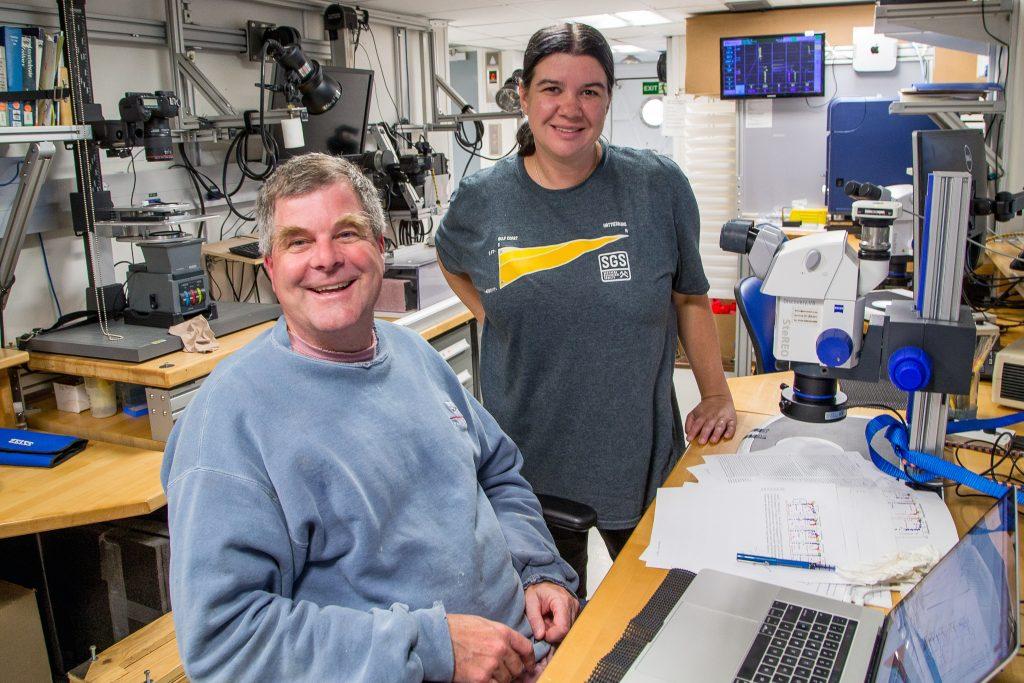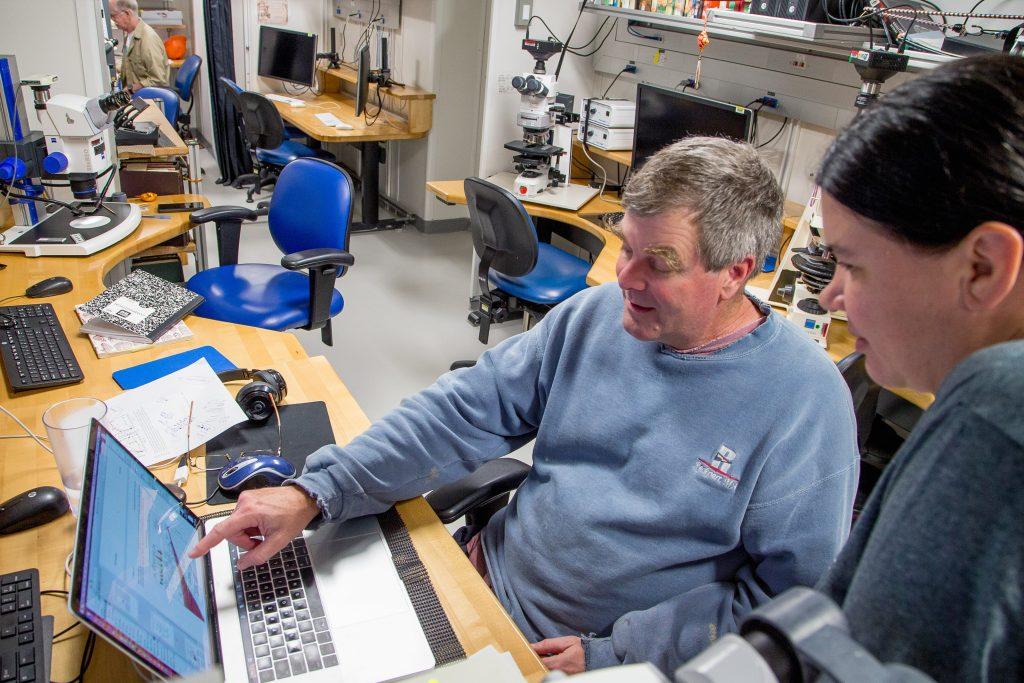
What Does It Take to Study the Ocean Floor?
Research scientists aboard the JOIDES Resolution (JR) are curious about what lies beneath the ocean floor, how it is structured, and how water and rocks interact beneath the surface. They want to understand what-where-how microbial life exists in this environment, and they want to use what they learn to better understand planetary forces like plate tectonics. Overarching all of these quests is the goal to advance their “understanding of Earth’s past to be able to better understand and predict its future, and…inform decision-making about some of the most important environmental issues facing society today.”
How do you study the deep ocean floor? We aren’t able to wander around under thousands of meters of ocean water very easily, kicking over a rock to see what’s under it. It’s dark down there, and the pressure is immense. When you stop to think about how to actually get your hands on rocks and water from the seafloor, you start to realize some of the challenges. Research scientists on the JR are able to collect core samples and water samples thousands of meters beneath the ocean surface using a ship, drill pipe, and a lot of ingenuity. Gaining access to the deep ocean floor requires patience – to keep trying things that have never been done before – and creativity – to tirelessly dream up new ways to overcome obstacles. Getting information this way can be like trying to enjoy a milkshake with a 70-foot long straw. That’s why this type of research is so amazing.
Dr. Charles Geoff Wheat, one of the research scientists on Expedition 385T, has been using his ingenuity to learn more about the deep ocean floor on over 74 oceanographic expeditions. He specializes in low- and high-temperature geochemistry, hydrogeology, fluid samplers designed for holes drilled into the seafloor, and instruments used to gather data in the ocean. This means he spends a lot of time tinkering around with ideas and prototypes for exploring the subseafloor. As he and other research scientists delve deeper into their work, they often need to come up with ideas for tools and instruments that can help them gather samples, install and maintain borehole observatories, and you know, kick over a rock to see what’s under it. Sometimes their work requires robotics and underwater submersibles, like the HOV Alvin and ROV Jason.

Dr. Wheat devotes time and energy every year to developing opportunities for kids to explore robotics, too. Currently, he is part of a team dedicated to creating a nationwide robotics program that “sparks excitement for learning about marine environments and helps young people, especially those who might not otherwise experience these types of activities, to see themselves in the role of explorer, scientist and engineer.” Sit down for a chat with Dr. Wheat and you soon realize he has many inspiring ideas about ways to get the youth interested in science and motivated to challenge themselves. These broader impact activities are an excellent way to introduce students to possible careers in ocean exploration and to connect the public to scientific research. The JR Academy undergraduate students on this expedition, also, have been benefiting greatly from their interactions with Dr. Wheat.
Exploration of the subseafloor poses challenges and obstacles. There must be something about it that keeps creative minds like Dr. Wheat’s engaged and seeking to share the quest with kids all over. Whether we use robotics, a ship like the JR, or a 70-foot straw, we have so much to explore.